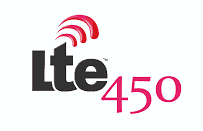As wireless technologies advance, most cellular network operators are increasingly moving towards higher frequencies and phasing out the 450 MHz spectrum. Utilities and other companies can now use the freed frequency band to build private networks that would provide them with cost-effective and reliable connectivity.
By moving to their dedicated communication networks, water, gas, and electric utilities will have more control in addition to offloading their traffic from already congested public networks.
The 450 MHz frequency provides various benefits to the utilities and especially in supporting the advanced metering infrastructure (AMI). Consequently, utilities can use the dedicated wireless LTE networks to connect smart meters, sensors, IoT devices, and other assets to their data centers.
In addition to the better coverage, the private 450 LTE is more stable and secure, hence ensuring reliable and better connectivity. Generally, a private network provides a higher level of security, and this reduces the risks of attacks and compromises on the AMI, utilities, and consumer’s physical assets and data.

Over the recent past, utilities have been undergoing a digital transformation as providers seek ways to improve efficiency, reliability, and availability. Towards this, the water, gas, and electricity utilities are increasingly replacing their manual systems with smart metering and monitoring solutions. The process has been a gradual process with successes and various challenges, such as high costs and technology limitations.
Smart metering requires communication technologies that allow utilities to collect real-time consumption and quality data from the consumer location, and then send this information to the utilities data management systems for analysis. Using the analysis, utility operators can determine the current usage of resources such as electricity, water, or gas. Such insights allow them to better manage and balance the supply and demand in addition to addressing quality issues.
To deploy such systems, the utilities require reliable and cost-effective communication networks to connect all the smart meters to central control centers. For some time, the utilities have been using fiber optic cables, electric power lines, microwaves, public networks, and other LAN and WAN technologies for their communications needs. Unfortunately, the traditional physical connections may be impractical and uneconomical when there are millions of meters as well as consumers and facilities in remote and rural areas.
Besides high costs, some of these technologies, such as transmission power lines, are prone to noise and instabilities. Additionally, communication over power lines works for electrical systems but not for the water and gas networks.
To overcome these limitations, technology providers have tried different solutions to address the unique needs of smart metering. Although there are many solutions, the Advanced Metering Infrastructure offers one of the most promising connectivity.
Today, most utility companies are using AMI, which is an integrated infrastructure comprising of smart meters, communication networks, as well as data collection, analysis, and management solutions.
AMI provides two-way communication between the utility companies and the consumers and applies to the electricity, water, and gas industries. Most of the AMI deployments rely on a combination of private and public networks and may include Home area networks (HANs), Local Area Networks (LANs), and Wide Area Networks (WANs).
Components of an AMI:
The AMI has benefits such as enabling accurate remote meter reading, load profiling, identifying network problems, assisting in energy audits, and more. Other than consumption, the AMI and smart metering enables the utilities to monitor and manage other parameters, including the voltage, frequency, power factor, and other power quality issues.
However, to deliver these services effectively, the AMI requires a stable, reliable, and secure communications network. In practice, AMI operates on multiple physical and wireless communication networks. However, the LTE 450 private network can replace most of these and consolidate all the utility applications into a single communication network. Consequently, this improves the reliability and availability while reducing the complexity, instabilities, and other challenges of using multiple communication networks.
Generally, LTE networks can run on both low and higher frequencies, including the GHz range. However, to support utility, M2M, IoT, and other automation applications, the 450 MHz band provides several benefits than the higher frequencies and is, therefore, more ideal for AMI and smart metering.
A private LTE 450 MHz is a dedicated wireless communications technology operating on the 450 MHz spectrum and typically isolated from the public networks. Most often, private LTE has a design and flexibility to support organizations seeking specific connectivity solutions that public networks do not offer.
Utilities can use the private LTE network to interconnect a large number of offices, consumers, and facilities located in different locations. In particular, the 450 LTE is more attractive than other frequencies due to its availability and superior characteristics. These make it ideal for current and future wireless communication needs for AMI, IoT and M2M, and other technologies.
The dedicated cellular network provides more control, is more flexible, and, since it follows a global standard, is future proof. Most importantly, the stable, reliable, and secure communications enable utilities to adequately address their unique connectivity needs much better than the public networks.
The 450 MHz private network provides a combination of high security, reliability, resiliency in addition to lower deployment and operational costs. Additionally, utilities can use the private cellular network for almost all end-to-end connectivity instead of using multiple communication networks.
The main LTE 450 network benefits include;
The 450 MHz spectrum has superior propagation characteristics that result in larger network coverage areas and deep penetration within buildings. By covering a large area per cell, the network requires a smaller number of towers, which means lower deployment, operational and maintenance costs. Similarly, the superior penetration properties enable it to easily pass through walls and obstacles, with minimal signal loss.
As such, it requires less costly equipment at the consumer endpoints while providing a reliable network to even connect and capture information from meters and sensors in hard-to-reach locations such as basements.
Further, the excellent signal penetration results in lower energy consumption, hence a benefit for components such as battery-operated meters and IoT sensors such as those used in water and gas metering systems.
A wireless network covering a large area translates to a low number of base stations or radio sites, which reduces the deployment cost as well as the running and maintenance expenses. Additionally, with a small number of stations, operators can add more redundancy equipment such as power modules and backup systems – further increasing resilience, reliability, and availability.
The utilities have more control over their private network, and they do not have to depend on third-party providers for most all their communications needs. Usually, relying on mobile operators to connect remote locations has limitations since the cellular companies may deem them unprofitable.
Utilities can also maintain, upgrade the network equipment, including the LTE modems, LTE routers, LTE cells, and other components any time, and when it makes economic sense and with little disruptions. Additionally, they can use their internal technology solutions to enhance the already strong LTE security. Ideally, a private network allows the utilities to isolate their communication systems from the internet and public networks, in addition to providing them with more control.
A private LTE 450 MHz provides the utility with a single network that supports all their applications and needs. Ideally, an LTE should provide utilities with a secure, reliable, and flexible wireless network at a low total cost of ownership. By using a single 450 LTE network, utilities can lower their communications costs while reducing the complexities and reliability issues.
An LTE 450MHz private network provides a more secure and reliable technology for the utilities systems and data. The enhanced, inbuilt security prevents a wide range of attacks that would otherwise lead to data manipulation, theft, and service disruptions.
Today, the smart grid is more vulnerable to cyber-attacks due to the many components and nodes, including renewable energy, smart homes, and others that increase the complexity and attack surface. Fortunately, the private cellular network has all the capabilities to provide secure communication and shield the utility systems and operations from cyber-attacks.
The adoption and deployment of the private LTE 450 network will continue to grow as more companies seek dedicated, reliable, and secure connectivity solutions. Today, as more operators phase out the spectrum, the frequency band will become more readily available for private use.
The wide adoption of the private network means that most utilities and other industries will offload the traffic from the congested public networks.
Private LTE 450 networks will grow significantly as utilities and other industries continue to digitize their operations and getting smarter. Other markets include the Industrial IoT, Industry 4.0, Smart factories, and other facilities that rely on wireless networks.
Other than supporting the AMI, M2M, IoT, and related applications, the LTE 450 private network will continue to grow and cover more industries. As this happens, there is a lot of potential for device manufacturers and service providers such as those for LTE 450 routers, 450 LTE modems, and other LTE devices and support systems.

We are thrilled to announce that Ali Mouslmani has joined WM Systems as our new partner in the United Arab […]

Introduction In the rapidly evolving world of industrial automation and IoT, the demand for compact, versatile, and efficient communication solutions […]

Introduction The fourth industrial revolution, or Industry 4.0, is redefining the landscape of industrial operations. Key to this transformation is […]

The group of WM Systems LLc.

Solar plants and farms are complex systems with a variety of equipment that needs to be monitored and controlled. This […]

Industrial settings are replete with equipment that demands efficient connectivity solutions. With the rise of the Internet of Things (IoT) […]

DIN-rail mountable industrial routers are an essential component of many industrial applications. They provide a reliable and secure way to […]

Make the modern smart grid more secure, resilient, and sustainable

In today’s dynamic world, understanding the nuances of electrical energy management has never been more crucial. A distinct feature of […]

Introducing the Relay Box
